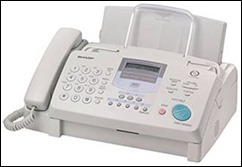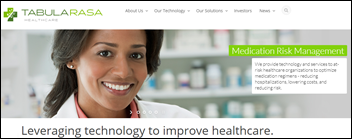HIStalk Interviews Rich Berner, CEO, MDLive
Rich Berner is CEO of MDLive of Sunrise, FL.

Tell me about yourself and the company.
I approach this as technologist, having grown up programming computers since fourth grade. I got into healthcare about 15 years ago, working in a variety of roles across a number of the big EMR and population health management companies. While I come at this as a technologist, I spend most of my day with teams and clients, getting them to focus on the outcomes versus technology.
MDLive was founded in 2009 and serves over 27 million members, providing virtual care for urgent care, behavioral health, and dermatology needs. We have over 1,200 clinicians across the country, operating in all 50 states 24/7.
Surveyed Americans love the idea of virtual visits, but the number who have actually experienced them is small. What will drive adoption?
Our greatest challenge is getting the word out there. People who use this service tend to come back about 1.8 times per year after the first visit. Where payers or employers are covering most of not all of the cost of the visit, we can get adoption rates as high as 30, 40, or 45 percent.
Have state-specific virtual visit restrictions mostly been eliminated?
2017 was an inflection point. It felt like the regulatory environment, payer environment, provider environment, and consumer demand came together. We’re seeing significant growth this year. Now you’re seeing CMS continue to talk about the future rules, and now that they are seeing the results, they’re going to be covering more types of visits virtually.
Have health systems mostly decided not to set up their own virtual visit service?
Whenever new technology comes out, people might be a bit threatened by it. But we have seen our hospital and health system clients view us as a partner, where they’re using our platform with their own clinicians, and where appropriate, they’re using our network to complement what they’re doing. We’re both trying to solve the same problem, which is how to improve the access and convenience of healthcare while increasing quality and driving down cost. We enable them to do that in partnership versus competition.
How do you recruit providers and prepare them to practice in a virtual environment?
We have nine years of hard work doing recruiting to bring these folks on board. They get credentialed with our groups. We also give them training, not only on the tools, but also things like webside manner and how you provide care virtually versus physically.
As a large, national medical practice, can you do a better job than small practices in terms of practicing evidence-based medicine and monitoring quality and patient satisfaction?
For our payer, employer, and even our health system clients, when you’re able to manage quality with fewer touch points, you have a better ability to drive quality initiatives. We’re doing it at scale across the nation. We definitely think that’s an advantage for us and our group to improve quality.
What expectations do virtual visit patients have and what do they like or dislike most often?
While many patients have a good relationship with their primary care physician, many don’t have a primary care physician at all. Or even if they do, for certain types of conditions, the most important thing they’re looking for is convenience or privacy. The ability to get the care they want, when they want, where they want. We are working with patients to identify situations when they are less likely to be satisfied. If they think they already know what the answer is and want a certain prescription or antibiotics or they have a condition that may not be appropriate to treat virtually, we do our best to identify that very early on in the process so they don’t get too far into a visit before recognizing that it may not be appropriate for virtual, or the condition they have may be different than they thought.
What patient information is available to the provider before the visit? What information from the visit is shared with the patient’s primary care physician or health system?
For our payer, employer, and hospital and health system clients that feed us data, the provider has access to all of the information that those organizations have. In addition, we have Sophie, our interactive chatbot, that collects a certain amount of data. We’re rolling it out this quarter, where she is automating the triage process so that the provider can get presented with predictive SOAP note. It’s our goal to give the provider as much of the patient’s story as possible before they see the patient, so that when they do, they can focus on the things that they were trained to do — empathize, educate, and make sure they get to that proper diagnosis quickly and develop the plan of care.
What technologies do your doctors use to document and complete the visit?
They choose the device they want to work from. Then we have a lightweight EMR that automates as much of the visit as possible to focus on letting the physician do what they’re trained to do, which is focus on the care they want to provide. We take out as much of the registration, billing, scheduling, and documentation as possible. We’re seeing this have a significant impact on helping solve one of the biggest problems that is out there, which is physician burnout.
What are the characteristics of doctors who most enjoy providing virtual visits and what is their satisfaction level compared to a more traditional setting?
We do surveys regularly and focus on addressing any concerns that are raised. We believe there will a movement for the rise of the virtualist. These will be classic clinicians who, more and more, want to do this full time, similar to the hospitalist movement in the 1990s. We are seeing a broad array of physicians who want to do this, from millennials who want work-life balance to people who are getting near retirement and want to pull back from the shifts but still want to be able to provide care and focus on care rather than a lot of the administrative stuff.
Are providers satisfied with working episodically and not having ongoing involvement with that patient’s overall health?
I’ll answer in two ways. One, our physician satisfaction is higher than most national groups and survey averages that we’ve seen. They get a lot of real-time feedback. Once consumers become aware of this service and use it, they are so thankful for not having been forced to go to the emergency room or urgent care or driving 50 miles. They are getting that real-time feedback. They’re also getting feedback from surveys. For a lot of our clinicians, the patient can select if they want to schedule an appointment with the physician versus see one in real time, so a number of our clinicians see the same patient when they request a visit with the same clinician.
Does the patient choose the doctor or their location before the visit begins? How is a patient matched with a provider?
The clinician they ultimately see has to be licensed to provide care in that state. The consumer has the ability to say, I want to see the first available, or I want to schedule an appointment from a list of clinicians who are licensed to practice in the state.
Are you seeing doctors seeking medical licenses in multiple states just to prepare themselves for offering virtual visits?
Yes. The vast majority of our clinicians have multiple licenses.
What are the benefits of virtual care for people who are seeking counseling or psychiatric services?
As much as 40 percent of the population has behavioral issues. Many of them aren’t getting addressed, either because of access or embarrassment. We’re excited about providing these services virtually, which gives these people the ability to do it in the privacy, comfort, and convenience of their own home.
How will virtual visits change in the next 3-5 years?
We’ve done great work over the past two to three decades in automating the healthcare industry with electronic medical records, population health management systems, and even incorporating genetic information to make sure plans of care are personalized. But we still fundamentally haven’t disrupted the healthcare industry or the way care is provided. Telehealth represents a real opportunity to disrupt healthcare — to put it on the consumer’s terms and to give them care where they want, when they want, and how they want.
Looking out three to five years, we can see a healthcare system where a large portion of primary care is not only provided virtually, but is also automated and optimized through things like artificial intelligence and machine learning and with chatbots like Sophie, to help make that shift to proactive, predictive health management as well as care.
Do you have any final thoughts?
We’re extraordinarily excited about the opportunity in front of us. It’s not often that you can provide a service that’s better for the consumer, better for the clinician, and better for the healthcare system overall. Consumers can access it conveniently, clinicians can focus on providing care, and quality and cost will improve. It’s an exciting time for MDLive and the healthcare system overall.

















































































Re: Dr Z. Great story, but whatever happened to professional courtesy???